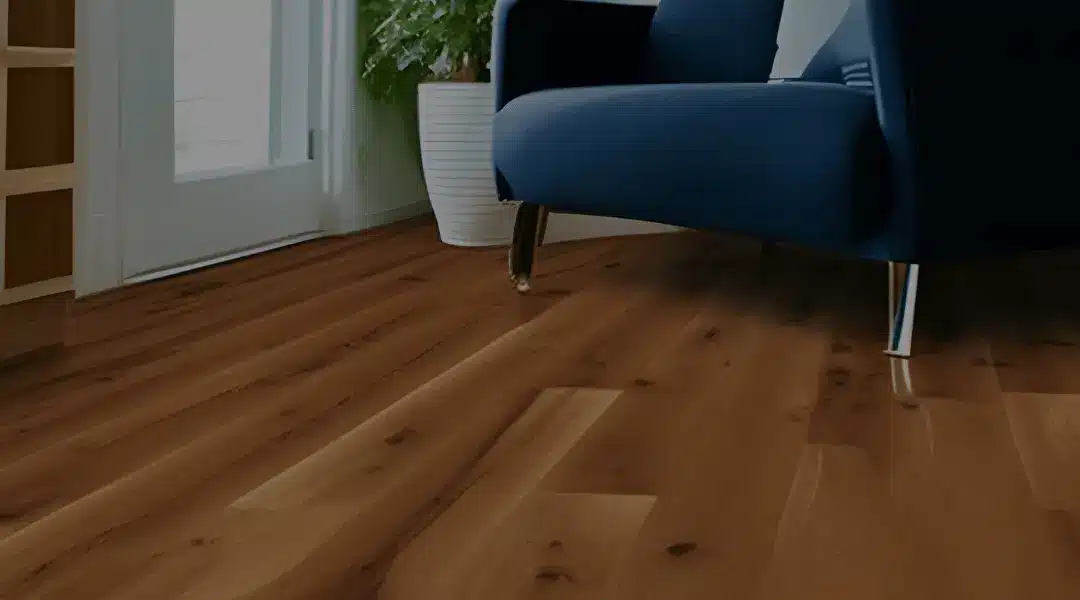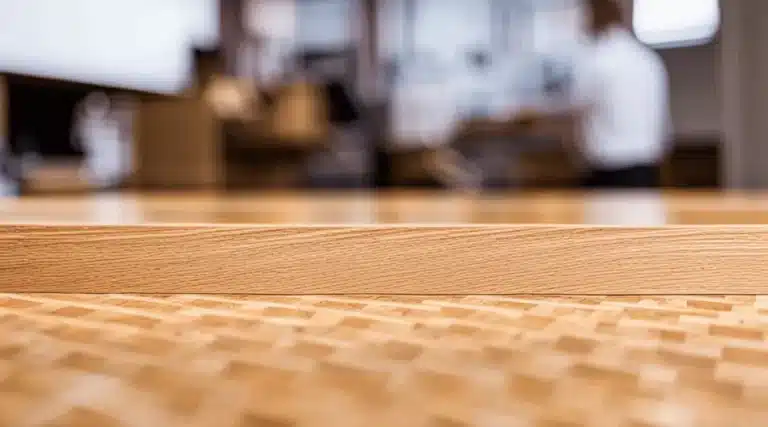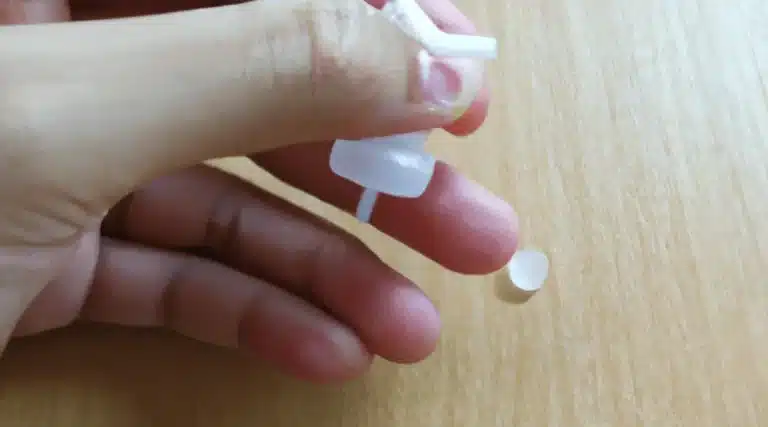Laminate flooring is a popular choice for homeowners due to its durability, affordability, and easy maintenance. However, when adhesive residue is left behind after installation or removal of carpet or rugs, it can be frustrating to remove. Fortunately, with the right tools and techniques, it is possible to get rid of the glue residue without damaging the laminate flooring.
In this article, we will provide practical tips for removing glue residue from laminate flooring. We will discuss the importance of identifying the type of adhesive residue before attempting to remove it, and the importance of gathering the right supplies and testing a small area before proceeding.
We will also cover gentle methods for removing glue residue, such as using hot water or vinegar, and move on to stronger solutions if necessary. By following these tips, you can effectively remove glue residue from your laminate flooring and restore its original shine and beauty.
Identify the Type of Glue Residue
Accurately identifying the specific type of adhesive residue present on a laminated flooring surface is a crucial initial step in devising a suitable removal approach. Different types of glue residues require different techniques of removal, and using the wrong approach can lead to damage to the flooring surface.
Identifying residue types involves examining the color, texture, and hardness of the residue left behind. For example, white or transparent residue is usually a water-based adhesive, while yellow or brown residue is likely an oil-based adhesive.
Once you have identified the specific type of glue residue, you can select the most effective removal techniques. Therefore, it is essential to take the time to identify the residue type before you start removing it. With this knowledge, you can gather your supplies and proceed with the most appropriate removal approach for your particular situation.
Gather Your Supplies
The section focuses on the preparation for the process of eliminating the remaining adhesive by gathering all the necessary materials and tools. Supplies organization is vital to ensure that you have everything you need before you start the process. You don’t want to be running around looking for supplies while you’re in the middle of cleaning. Safety precautions should also be taken into account to prevent any accidents while cleaning.

To make the process more enjoyable and relatable, here are some items that you should gather before starting:
1) A plastic scraper to remove hard adhesive residue,
2) Rubbing alcohol to dissolve the glue,
3) A clean cloth to wipe away the residue, and
4) A vacuum cleaner to pick up any loose debris.
These items will make the process easier and quicker. Once you have gathered all the necessary materials, you can move on to the next step and test a small area to ensure that the cleaning products and techniques you are using do not damage the laminate flooring.
Test a Small Area
Testing a small area is an important step in the process of eliminating remaining adhesive, as it allows for the identification of any potential damage to the laminate flooring.
In fact, a study conducted by the National Wood Flooring Association found that improper cleaning techniques can lead to significant damage to flooring, resulting in costly repairs. Precautionary measures must be taken before using any cleaning solution, as some may cause discoloration or other types of damage.
It is important to note that the benefits of professional cleaning services are immeasurable, as they have the knowledge and experience to recognize the type of adhesive used and the proper technique to remove it without causing any harm to the flooring.
It is always best to try the gentle methods first, such as using warm water and a soft cloth, before turning to harsh chemicals or tools. This will not only save you money but also ensure the longevity of your laminate flooring.
Try the Gentle Methods First
When dealing with glue residue on laminate flooring, it’s important to start with gentle methods before moving on to harsher ones.
Two effective options for removing glue residue are heat and oil, which can help loosen the adhesive and make it easier to wipe away.
Rubbing alcohol is another gentle option that can dissolve the glue without damaging the laminate surface.
Additionally, a mixture of vinegar and baking soda can create a gentle yet powerful cleaning solution that can effectively remove glue residue.
Heat and Oil
By applying heat and oil to the affected area, an effective solution can be found for eliminating the sticky residue on the surface of the laminate flooring. Heat application can loosen the glue, making it easier to remove, while oil-based solvents can dissolve the residue.
Here are some practical tips for using heat and oil to remove glue residue from laminate flooring:
- Use a hairdryer or heat gun to apply heat to the glue residue for several minutes until it softens.
- Apply a small amount of oil, such as vegetable oil or baby oil, to the affected area and let it sit for a few minutes.
- Use a plastic scraper or credit card to gently scrape off the softened glue residue.
- Repeat the process if necessary, using more heat and oil as needed.
- Once the residue is removed, clean the area with a damp cloth to remove any remaining oil.
Applying heat and oil can be an effective and gentle way to remove glue residue from laminate flooring, but if the residue persists, rubbing alcohol can be used as a stronger solvent.
Rubbing Alcohol
Rubbing alcohol is a potent solvent that can effectively dissolve tough and stubborn adhesive residues on the surface of laminate flooring. This cleaning solution is a great alternative method to heat and oil, especially if you are looking for a less messy and more efficient way to get rid of glue residue.
To use rubbing alcohol, simply apply a small amount onto a clean cloth or cotton ball and rub the affected area in a circular motion. Be sure to apply enough pressure to lift the glue off the surface but not too much that it damages the laminate.
Once all the residue is gone, wipe the area with a clean and damp cloth to remove any excess rubbing alcohol. This method is simple, quick, and affordable, making it an excellent option for those on a budget or short on time.
However, if rubbing alcohol is not readily available, the next subtopic will discuss an alternative method using vinegar and baking soda.
Vinegar and Baking Soda
The use of vinegar and baking soda is another effective method for eliminating stubborn adhesive residues on the surface of laminate flooring. Vinegar is a natural acid that can break down the glue, while baking soda is a mild abrasive that can help lift it off the surface.
To make a vinegar and baking soda cleaning solution, mix equal parts of white vinegar and water in a spray bottle. Sprinkle baking soda over the residue, and then spray the vinegar solution on top. Let the mixture sit for a few minutes, and then scrub the area with a soft-bristled brush.
Rinse the area with water and dry it thoroughly. The benefits of vinegar and baking soda for cleaning are that they are affordable, readily available, and safe for use on laminate flooring. However, if the residue is particularly stubborn, it may be necessary to move on to stronger solutions.
Move on to Stronger Solutions
When gentle methods fail to remove stubborn glue residue from laminate flooring, stronger solutions are necessary.
Acetone is a potent solvent that can break down glue, but it should be used with caution as it can damage the flooring if applied in excess.
Commercial adhesive removers are another option, but it is important to choose a product that is safe for laminate flooring and to follow the manufacturer’s instructions carefully.
Acetone
Interestingly, acetone, a highly volatile and flammable chemical, has been found to be an effective solution for removing adhesive residue from laminate flooring. Acetone is commonly found in nail polish removers and paint thinners and is readily available in most hardware stores.
However, it is important to take precautions when using acetone, such as wearing gloves and protective eyewear, as it can be harmful if ingested or comes in contact with skin. Additionally, it is essential to ensure proper ventilation when using acetone due to its volatile nature.
To use acetone, simply apply a small amount to a cloth and rub it onto the adhesive residue until it dissolves. Afterward, wipe the area clean with a damp cloth and allow it to dry thoroughly.
While acetone is an effective and affordable solution, it is important to note that it may not work on all types of adhesive residue. If acetone does not work, it may be necessary to move on to commercial adhesive removers.
Commercial Adhesive Removers
While acetone is a popular choice for removing glue residue from laminate flooring, it may not be the best option for those seeking eco-friendly solutions.
In such cases, commercial adhesive removers can be a better alternative. These products come in various forms, including sprays, gels, and liquids, and differ in their effectiveness depending on the type and amount of glue residue.
It is important to compare the effectiveness of different adhesive removers and choose one that is safe for use on laminate flooring.
The benefits of eco-friendly adhesive removers include their biodegradability and low toxicity, which make them a safer choice for both the environment and the user.
However, it is still important to use caution when applying these solutions to minimize any potential damage to the flooring.
Use Caution When Applying the Solutions
It is important to exercise caution when applying the recommended solutions to remove glue residue from laminate flooring. Using protective gear and choosing the right tools are essential to avoid damaging the flooring and ensure effective glue removal.
Before applying any solution, test it on a small, inconspicuous area to ensure that it does not discolor or damage the laminate. When using a scraper or putty knife to remove the residue, do so gently to avoid damaging the surface of the flooring.
Additionally, ensure that the area is well-ventilated to prevent inhaling fumes from the solutions. Once the glue residue is removed, finish with a clean, dry floor by wiping it down with a damp cloth and allowing it to air dry.
By following these precautions, one can safely and effectively remove glue residue from laminate flooring.
Finish with a Clean, Dry Floor
To achieve a clean and dry surface on laminate flooring, it is essential to complete the glue residue removal process by wiping the area with a damp cloth and allowing it to air dry. However, this is not the end of the process.
To prevent future damage and maintain the beauty of your laminate flooring, you must take some additional steps. Firstly, ensure that you protect the laminate by avoiding the use of harsh cleaning products that may cause scratches or discoloration. Use only those products that are specifically designed for laminate flooring.
Secondly, make it a habit to regularly clean your flooring with a gentle cleaner and a microfiber mop. This will help to keep the surface looking shiny and new.
Finally, consider placing mats in high-traffic areas to catch dirt and debris before it can scratch the surface.
By following these maintenance tips, you can keep your laminate flooring looking great for years to come.
Finish with a clean, dry floor.
Conclusion
Removing glue residue from laminate flooring can be a daunting task, but with the right tools and techniques, it is achievable.
First, it is essential to identify the type of glue residue to determine the appropriate cleaning solution. This can be achieved by inspecting the area and checking any labels or documentation that came with the flooring.
Next, gather the necessary supplies such as a scraper, rubbing alcohol, vinegar, and a microfiber cloth. It is crucial to test a small area first before applying any cleaning solutions to avoid damaging the flooring.
Start with gentle solutions such as warm water or rubbing alcohol, and gradually move on to stronger solutions if needed. When applying the cleaning solutions, it is essential to exercise caution and follow the instructions carefully to avoid any damage to the flooring.
Finally, finish with a clean, dry floor by using a microfiber cloth to remove any residue and wiping the floor with a damp cloth.
In conclusion, removing glue residue from laminate flooring can be a challenging task, but with the right approach and tools, it is achievable. It is crucial to identify the type of glue residue, gather the necessary supplies, and test a small area before applying any cleaning solutions. Using gentle solutions and exercising caution when applying the solutions can help protect the flooring from damage. Ultimately, the result will be a clean and shiny floor, resembling a polished gem, that evokes a sense of satisfaction and pride.



